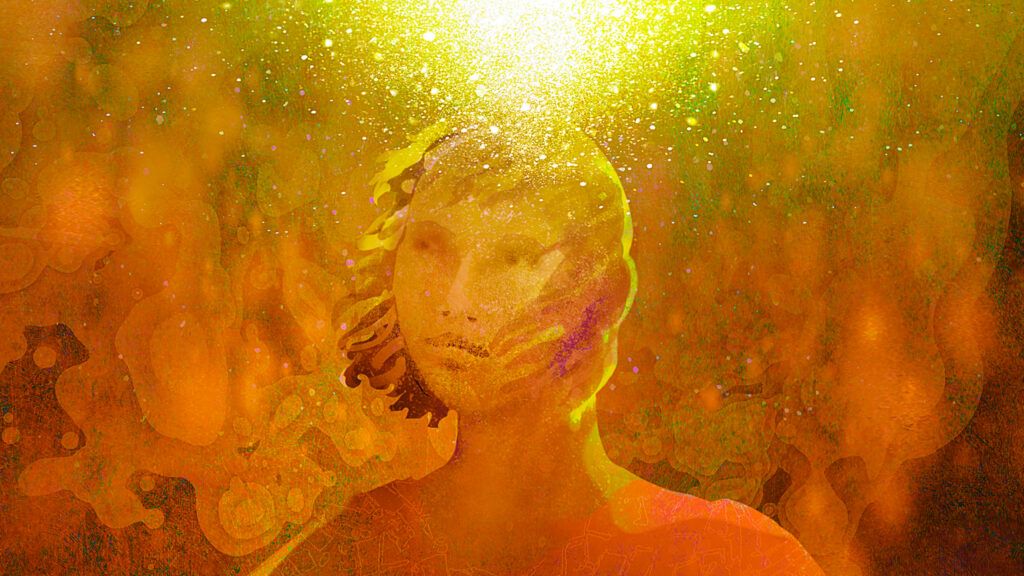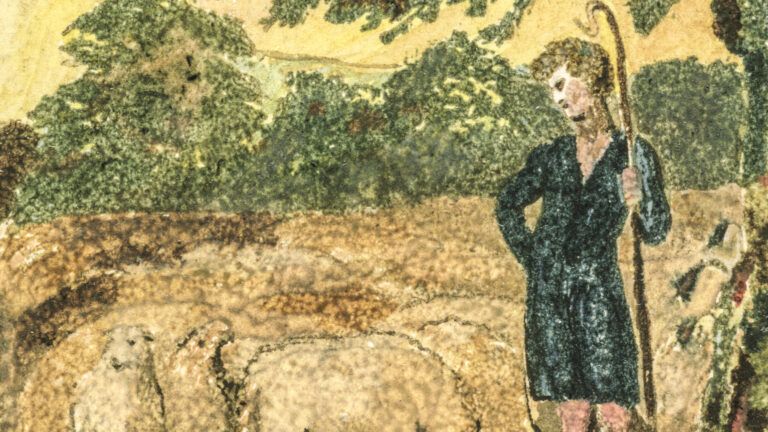I was working on a piece on the wonders of the galaxy for Mysterious Ways—and I was stuck. I’d been staring at the document so long that my eyes were burning. I had zeroed in on the concept and had all the information, but I just couldn’t figure out the best way to structure the piece. Then, suddenly, seemingly out of nowhere, it hit me. A thought entered my mind, clear and concise. As if someone had placed it there. Make it centered around the image.
Of course! That was it. The very image that had inspired wonder and awe in me should be the springboard for the piece. The Hubble Telescope shot of a dark corner of the galaxy, the size of the tip of a pencil, which upon closer examination revealed more than 10,000 galaxies, gleaming like diamonds in the darkness of space. I placed my fingertips on the keys and furiously began typing.
I finished the galaxy piece. We moved forward and published it, and the story became Statistically a Miracle, featured in our April/May 2019 issue. Afterward, I still couldn’t stop thinking about that mysterious moment of inspiration—how had it just popped into my head like that? Where had it come from? Was it possible that I’d tapped into something greater than myself? I shied away from that thought.
The only time I’d ever heard of the divine working through humans was in the case of the Bible itself, divinely inspired but recorded by human hands. I’m no prophet, no genius. And yet the question remained: Do other people experience inspiration the way I did? If so, what if that divine spark is something that everyone can experience in some capacity? I dug deeper to find out.
Historically, accounts of miraculous inspiration are common in the art world. Many renowned creative works have been attributed to a source bigger than the artists themselves. Often, the inspiration is delivered in a dream or a vision. Like the one experienced by Harriet Beecher Stowe, author of the pivotal book Uncle Tom’s Cabin.
In February of 1851, Stowe was seated in the twenty-third pew at Brunswick’s First Parish Church in Maine when she was struck by the violent and “almost tangible” scene of an enslaved person being abused. It was so visceral, so powerful, that she had to stifle her sobs. At the end of the service, Stowe rushed home. In her haste, she grabbed a paper grocery bag and began writing. Her son Charles later wrote in a biography of his mother that it was “as if what she wrote was blown through her mind as with the rushing of a mighty wind.”
Harriet herself said in a third-person recounting of her process that the book was less “composed by her than imposed on her,” and that she didn’t write it; “God wrote it.” Uncle Tom’s Cabin was a best-selling novel, credited with shedding light on the oppression of slavery and helping pave the way for abolition in America. Because Stowe’s book, inspired by a mysterious vision, effected a historic change, it’s tempting to view it as divinely inspired.
This kind of divine spark isn’t just relegated to the past. It still happens to artists today. Artists like Akiane Kramarik. Heralded as a genius and a prodigy, Kramarik rose to fame when, at age eight, she painted the globally recognized masterpiece Prince of Peace. The portrait of Jesus’ face is set against a black background, his eyes peering deep into the viewer’s soul. Imparting joy, wisdom, reassurance. And something else. Mystery.
How could such a young girl paint something so transcendent, so skilled, so universal? What’s more, Kramarik wasn’t even raised in a religious household. So where were these images coming from? Dreams and visions, Kramarik says. They began when she was four and persist to this day. “These dreams and visions can be so transformative, where I am right there in the experiential reality I am shown, or with a viewing ‘window,’ where I am just as a spectator with one distinct goal—to paint what has been revealed,” she explained.
They show beautiful things. Glimpses of heaven. Peeks into the future. All of which she has captured on canvas. After the initial inspiration strikes, Kramarik invites God to be an active part of the process by remaining open, she says. Sometimes that means painting over an image that has taken months to create, a painful proposition for any artist. But, as Kramarik says, “I must be faithful to the voice that guides me.… My connection to God reminds me of the grandness of the infinity guiding me along the narrow path.”
These incredible, mysterious and otherworldly accounts brought me to my second question: Does divine inspiration extend beyond professional artistry to all of us? The answer is yes, according to J. Scott McElroy, author of Finding Divine Inspiration: Working With the Holy Spirit in Your Creativity. Though we may not experience anything as seismic as a vivid dream of heaven, or a chapter of a book delivered to the mind like a clip from a movie, everyone has the ability to experience moments of divine elucidation.
“I know plumbers who ask God for solutions. Moms who ask God for solutions,” McElroy says. “There’s no limit to how we can collaborate with God if we’re willing to hear his voice and are sensitive to it.”
His remark reminded me of a story recently sent to our Mysterious Waysin-box by reader Patrick Moran. A person of faith, Moran is not an artist or creative by trade but a registered nurse. Early in his career, he’d noticed that one of his patients, a terminally ill little boy, needed cheering up. Moran was suddenly struck with an idea: to use two mini sword-shaped toothpicks that he’d forgotten to take out of his pocket to challenge the little boy to a sword fight.
The result: The last days of the little boy’s life were filled with make-believe and fun. If Moran experienced that divine spark in his work, I thought, then divine inspiration can be behind all creative solutions that bring good into the world.
McElroy agrees: “Creativity is something God put in each one of us. One of his greatest gifts to us is the ability to participate in it with him.” McElroy contends that the key to unleashing divine inspiration in everyday life is about inviting God into our problem-solving. McElroy encourages people to think about inspiration as a collaborative effort—one that can be cultivated through prayer, meditation and journaling—rather than as God controlling us.
Then, when the time comes to address a problem, it’s second nature to be open to God’s input. God wants to work with us, says McElroy, not only to reflect his greatness but also because it offers another way to choose to lean on your faith. “Creativity is making all of these choices, and when you’re trying to hear his voice in it, you’re trying to align your free will with his will. And when that happens, there’s this great joy.”
We’re all not destined to paint a masterpiece. Or write a novel. But each creative act, as big as composing an award-winning score, or as seemingly modest as baking a pie for loved ones, can bring the divine into our earthly realm. God wants to help make each of our lives a masterpiece. Whether or not we consider ourselves creative people, divine inspiration is innate in all of us. It’s just waiting for us to invite it in.





